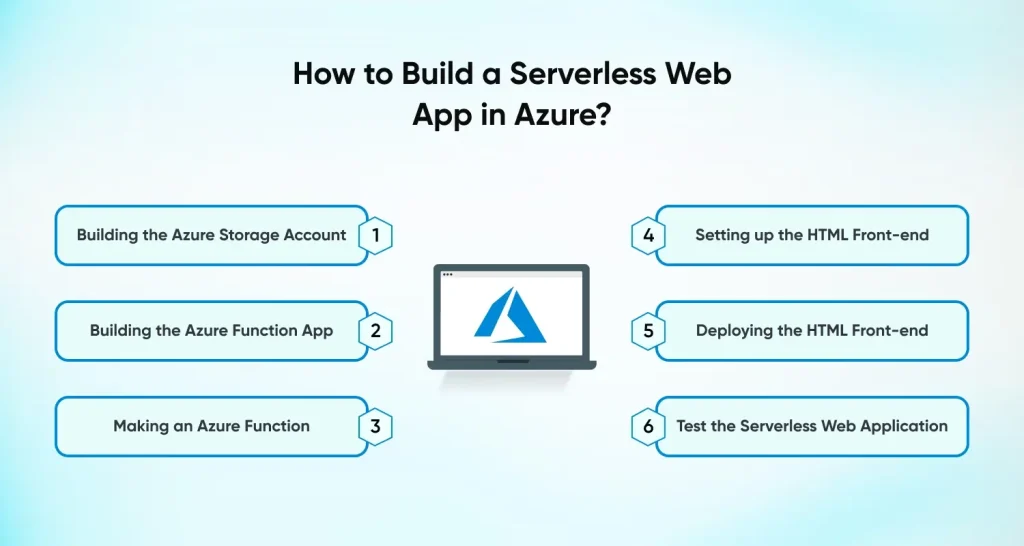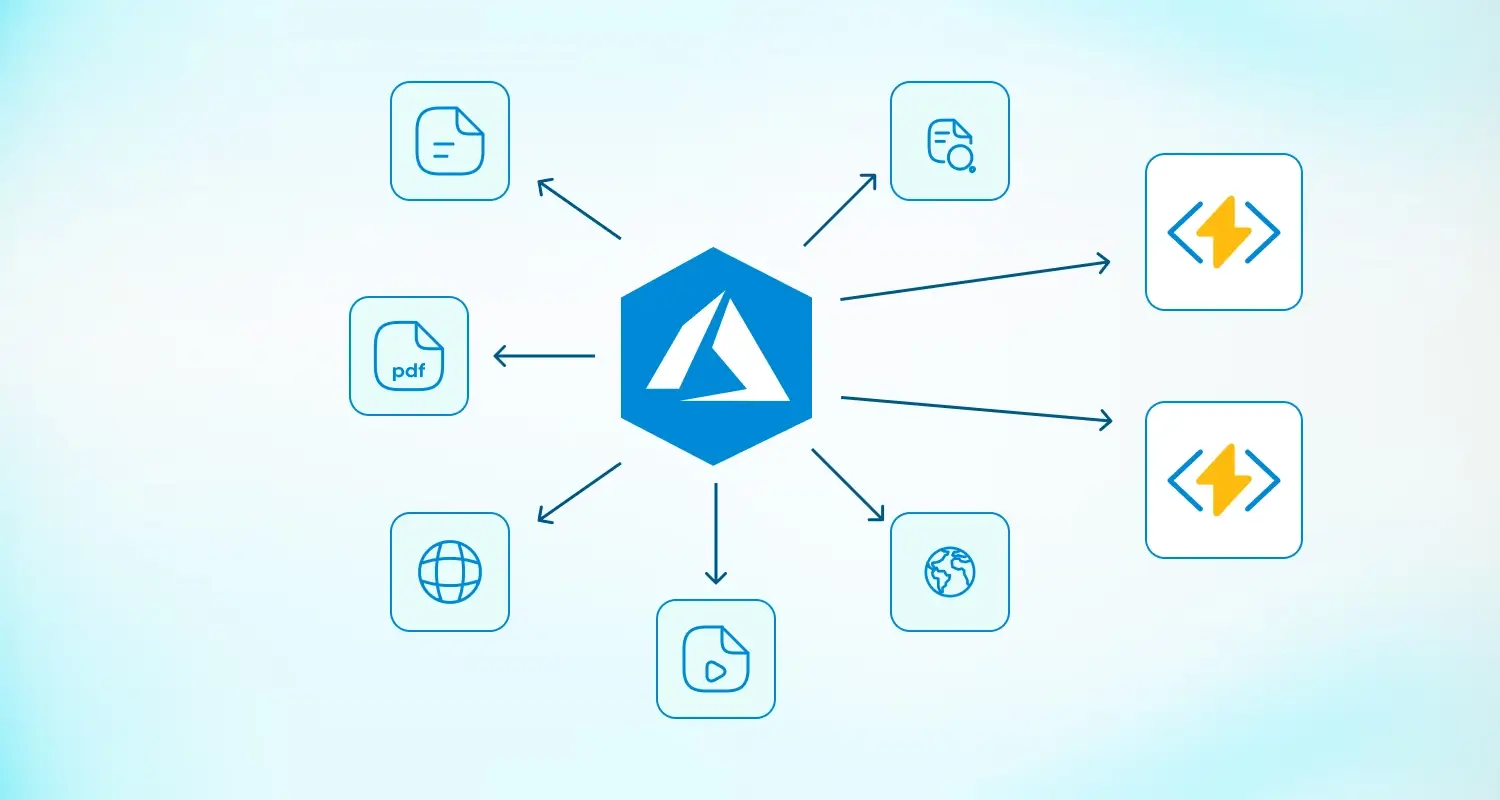Do you want to discover how to build a serverless web app in Azure? You’re in the right place! Have you ever been curious about serverless computing?
It’s an intriguing idea that lets you create applications without concern about server administration. Yes, you read that correctly. No longer must servers be provisioned, scaled, or maintained. With serverless, you can concentrate just on the essential logic of your application while leaving the complex infrastructure issues to the cloud provider.
Therefore, this blog is for you whether you’re a developer interested in learning more about serverless computing or an ASP.NET development company trying to produce top-notch web apps. Prepare to maximize Azure’s serverless computing capabilities and advance your web app development.
Why Should You Create a Serverless Application?
You may focus on your application code rather than managing and running infrastructure when creating a serverless application. Additionally, you don’t need to think about provisioning or configuring servers because the Azure serverless web app means it takes care of these tasks for you. Let us study below why serverless apps are preferred to standard server-hosted apps.
- Low maintenance
- Scalability
- Reduced infrastructure cost
- Less management
What are the Different Types of Serverless Computing?
There are essentially two types of serverless computing that developers frequently run into backend-as-a-service (BaaS) and function-as-a-service (FaaS). Let’s study both the serverless computing type closely.
Backend-as-a-Service (BaaS): BaaS enables developers to make use of external cloud service providers’ services and applications. It provides a wide range of features, including databases that can be accessed in the cloud, high-fidelity consumption data, additional encryption, and authentication services. Developers usually communicate with serverless operations while using BaaS through application programming interfaces (APIs). Developers can concentrate on creating unique experiences thanks to these APIs’ smooth integration with the offered backend services.
Function-as-a-Service (FaaS): In the serverless era, FaaS is the paradigm that is well known. Developers can use FaaS to design server-side logic that runs inside managed containers provided by cloud services. The major cloud services providers, such as IBM Cloud, Google Cloud, Microsoft Azure, Amazon Web Services, and Google Cloud, each offer their own FaaS options, such as Azure Functions, AWS Lambda, and IBM Cloud Functions. For instance, Azure Functions gives developers the freedom to focus on creating unique experiences while Azure takes care of the supporting infrastructure.
Let’s now investigate how you may use Azure’s serverless architecture to build a web application.
A typical Azure serverless web application uses Azure Functions to create an API and Azure Blob Storage to serve static content. The web application communicates with the API, which accesses Azure Cosmos DB to retrieve data. Azure Kubernetes Service (AKS) makes use of the virtual node capability of AKS to provision Azure Container Instances (ACI) pods that launch in order to effectively handle scalability.
By adjusting its capacity based on the demand thanks to dynamic provisioning, AKS can do away with additional server management. You can create and deploy your applications continuously in a repeatable and manageable way with the aid of containers. Scalable and durable container clusters can be built by coordinating the deployment of these containers using Kubernetes in Azure Kubernetes Service (AKS).
It is crucial to hire ASP.NET developers with experience in Azure and serverless computing for implementing this architecture successfully. Your web application will be efficiently created while following serverless architecture principles thanks to their expertise with ASP.NET and Azure’s features.
Therefore, if you want to build a web application in Azure and make use of serverless architecture, think about working with ASP.NET developers that can take advantage of Azure’s serverless capabilities to produce a scalable, economical, and high-performance web application.
You can create a web app in Azure that scales with ease and offers top-notch user experiences by using Azure Functions, Azure Blob Storage, Azure Cosmos DB, and Azure Kubernetes Service.
How to Build a Serverless Web App in Azure- Step-by-step Process

Step 1: Building the Azure Storage Account
Create a resource group to hold all the files your application needs to run as soon as possible. Create a storage account after that. Install the necessary extension to make your storage account available for static website hosting. Your storage account will be prepared to host the static content of your web application once it has been enabled.
Step 2: Building the Azure Function App
It’s now time to construct the Azure Function App. Make sure to run the command to construct the function app after updating all the required values. Once established, Cross-Origin Resource Sharing (CORS) should be configured to provide seamless access to resources on different servers by web browsers.
Step 3: Making an Azure Function
Using the command line to develop a function app is simple thanks to Azure CLI. But you can also use other tools to build functions according to your preferences and needs.
Step 4: Setting up the HTML Front-end
Create the HTML form that will be your serverless web application’s user interface. To meet the needs of your application, modify the HTML code as needed.
Step 5: Deploying the HTML Front-end
Upload the file or blob to the appropriate container in your Azure Storage account to make your HTML front end available. To simplify seamless request and response procedures, use the Fetch API.
Step 6: Test the serverless web application
It’s time to test your serverless web application in this phase. To see your application in action, go to the main endpoint URL of your static website. Test the client-side JavaScript function that is called when the user presses the Submit button to verify the functioning.
An Example of a Serverless Web Application
Use Azure Functions and Azure Storage to create a serverless web application. Through the use of an HTML form, users of this application can input data, which is then processed by a serverless function and saved in Azure Storage. The application exhibits the scalability and flexibility of serverless architecture as well as its power.
You have mastered the skills necessary to build serverless web applications on Azure. You may develop scalable and effective online apps by using the step-by-step instructions, Azure Functions, and Azure Storage. To ensure a flawless experience, keep in mind that hiring a qualified.NET Core developer can greatly improve your development process.
Given a real-world example of a serverless web application, you can use what you’ve learned to improve your own projects. Adopt the serverless paradigm, take advantage of Azure’s capabilities, and create scalable, high-performing web applications.
You may like this: 19 Essential Best Practices for .NET Core Development
Top Azure Serverless Solutions
Azure Functions: Azure Functions manage infrastructure management and scalability while enabling on-demand execution of custom code. Building your application as separate, independent functions with Azure Functions enables better modularity and flexibility.
A visual workflow designer is offered by Logic Apps, which makes it easier to plan and implement complex workflows in your application. You may seamlessly connect your web app with external systems, providing sophisticated integrations, by linking various services and components.
Event Grid: Event Grid manages all events that set up your code and logic by acting as a centralized event management system. It makes it possible for serverless web apps to have event-driven architectures by allowing real-time responses to events.
Azure Serverless Components Monitoring
Application Insights: This Azure monitoring feature gives developers the ability to keep an eye on their applications both locally and in Azure. It offers useful information about the usage, availability, and performance of the program.
Kudu: Kudu is essential for Git deployment and provides a number of additional functionalities for Azure Web Apps. It enhances the development process by offering sophisticated debugging and deployment features.
Data from numerous sources may be gathered and analyzed using Log Analytics, which allows you to compile all of your work into one workspace. Processes for monitoring and troubleshooting are made easier by centralization.
Operations Management Suite is a service offered by Azure that integrates log analytics, IT automation, backup and recovery, security, and compliance duties to offer a complete management solution for serverless web apps.
Azure Monitor: Azure Monitor provides the majority of Azure services with basic infrastructure metrics and logs. It lets you learn more about the functionality and state of your application, ensuring its smooth running.
Azure Service Health: Service Health keeps you up to date on scheduled maintenance and any service interruptions that can affect your serverless web app. It makes sure you’re informed so you can make plans.
Azure Advisor: This Azure platform service aids you in adhering to the best deployment practices in Azure. It offers suggestions for enhancing cost-effectiveness, security, and performance.
You may like this: Clean Architecture in .NET Core
Serverless Web App Implementation in Azure: Step-by-Step
Step 1: Setup the Face API. To add face recognition functionality to your serverless web app, you must first configure the Face API.
Step 2: Create the Logic App: Connect the Twitter account: Create a visual workflow using Logic Apps to link your web app to your Twitter account, allowing for interactions and data retrieval.
Step 3: Linking the Face API to the Logic App: Finishing the Visual Workflow The Face API can be integrated with your Logic App to add facial recognition to the process. Set up the visual workflow in the logic app to get the capabilities you want.
Conclusion
Microsoft developed or built Azure, a cloud computing platform or service. Software that is installed on a hosting service and made available online is referred to as “Software as a Service” (SaaS). The tools needed to develop apps are provided by platform-as-a-service. Access to essential resources like real machines, virtual machines, and virtual storage is made possible via infrastructure-as-a-service.
Frequently Asked Questions
To create a Web App on Azure, you have several options. The first method is through the Azure portal, where you can navigate to the Azure App Service section, select Web App, and follow the guided steps to configure and deploy your web application.
Alternatively, you can use Azure CLI (Command-Line Interface) to create a Web App. Open a command prompt or terminal, log in to your Azure account, and run the necessary Azure CLI commands to create and configure your Web App.
Azure Web App can be configured to operate in a serverless manner by using Azure Functions or Azure Logic Apps for specific functionalities, but it is not entirely serverless by default.
